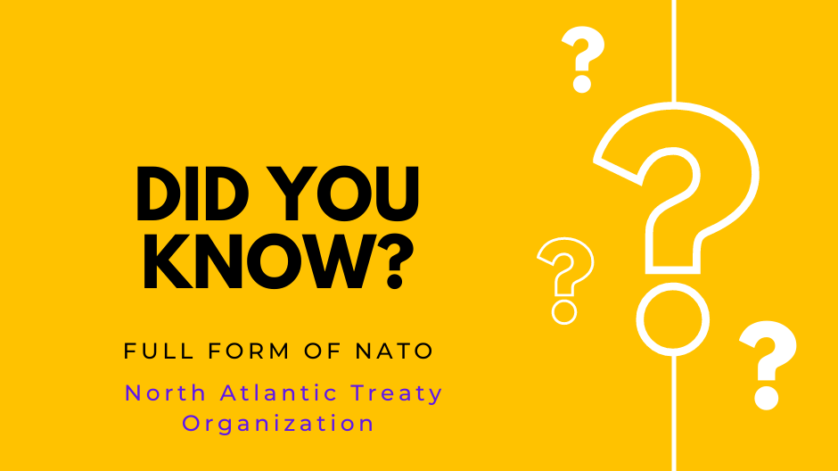NATO Full Form
NATO, or the North Atlantic Treaty Organization, is an intergovernmental military alliance between North American and European countries. The organization was established in 1949, following the end of World War II, with the aim of providing collective defense against potential security threats.
The founding members of NATO were the United States, Canada, and ten European countries. Over the years, the organization has grown and currently has 30 member countries, including several former Soviet bloc nations that joined following the fall of the Soviet Union.
The central principle of NATO is that an attack against one member is considered an attack against all members, and therefore, all members are obliged to respond with military force if necessary. This principle is enshrined in Article 5 of the North Atlantic Treaty, which states that “an armed attack against one or more of [the parties] shall be considered an attack against them all.”
NATO’s headquarters are located in Brussels, Belgium, and the organization is led by a Secretary-General, who is appointed by the member countries. The Secretary-General is responsible for coordinating the work of the various NATO bodies and ensuring that member countries meet their commitments.
One of NATO’s primary roles is to provide collective defense for its members. This includes deterring potential adversaries and defending against any potential attack. NATO accomplishes this through a range of activities, including joint military exercises, intelligence sharing, and the deployment of troops and military equipment.
NATO has also played a significant role in peacekeeping and conflict resolution efforts. The organization has deployed troops to a number of conflict zones around the world, including the Balkans, Afghanistan, and Iraq. In addition to military deployments, NATO has also been involved in diplomatic efforts to resolve conflicts, such as the Dayton Accords that ended the Bosnian War in 1995.
In recent years, NATO has faced a number of challenges, including changing security threats and disagreements among member countries. For example, there have been disagreements over defense spending, with some member countries failing to meet the target of spending 2% of their GDP on defense.
Another challenge for NATO is the changing security landscape, with new threats such as cyber attacks and terrorism requiring a different approach to traditional military defense. NATO has responded to these challenges by increasing its focus on cyber defense and counter-terrorism.
In conclusion, NATO has played a vital role in maintaining security and stability in the North Atlantic region since its inception. The organization has adapted to changing security threats and has been involved in peacekeeping and conflict resolution efforts around the world. While NATO faces challenges, it remains a key pillar of transatlantic security and defense cooperation.

